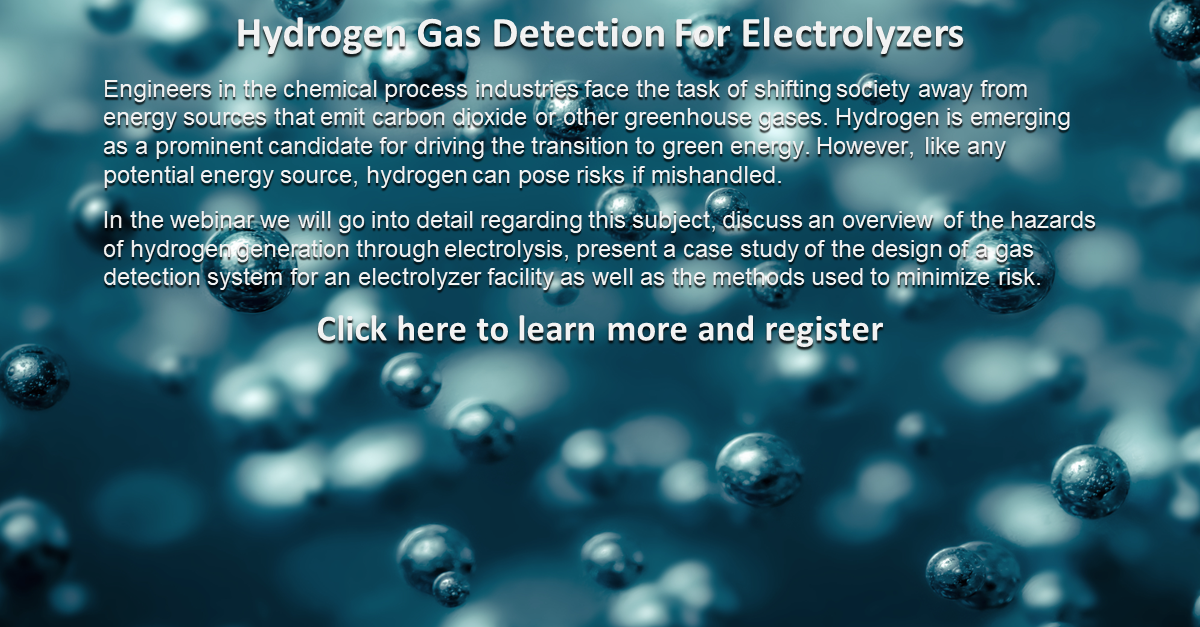Engineers in the chemical process industries face the task of shifting society away from energy sources that emit carbon dioxide or other greenhouse gases. While numerous methods of storing green energy are being considered, there is significant interest in converting green electricity into chemical energy that is easier to store and transport. The most common approach involves producing hydrogen from water through electrolysis and utilizing the hydrogen directly or converting it into ammonia or other chemicals for improved transportability and energy density.
Hydrogen is emerging as a prominent candidate for driving the transition to green energy. However, like any potential energy source, hydrogen can pose risks if mishandled, as hydrogen is highly flammable, oxygen acts as an oxidizer. Consequently, the release of hydrogen can create hazardous conditions with significant safety implications. To mitigate these risks, a widely used safety measure is the implementation of a gas detection system with automatic shutdown capabilities.
Register for this webinar on Thursday 20JULY2023 10:00am (UTC -5.00) at the bottom of the page.
Electrolysis unit operation involves various hazards that need to be assessed and controlled. The initial step in the process safety workflow, after developing process safety information, is conducting a process hazards analysis (PHA). Given the novelty of these processes and the level of risk, many electrolyzer systems undergo comprehensive hazards and operability studies (HAZOP) for their process hazard analyses. A loss of hydrogen containment presents both a fire and explosion hazard, which are significantly amplified when electrolyzers are indoors or sheltered under a roof, allowing released hydrogen gas to accumulate. It is common for PHA assessments of electrolyzers to recommend the use of gas detection systems, sometimes in conjunction with automatic shutdown mechanisms, to mitigate the consequences of hydrogen releases. To ensure acceptable levels of risk, these systems should be designed and implemented in accordance with the safety instrumented system standard IEC/ISA 61511. Additionally, ISA TR 84.00.07 provides additional guidance on determining the appropriate number and placement of gas detectors.
In the webinar we will go into detail regarding this subject, discuss an overview of the hazards of hydrogen generation through electrolysis, present a case study of the design of a gas detection system for an electrolyzer facility as well as the methods used to minimize risk.
REGISTER FOR THIS WEBINAR BELOW

